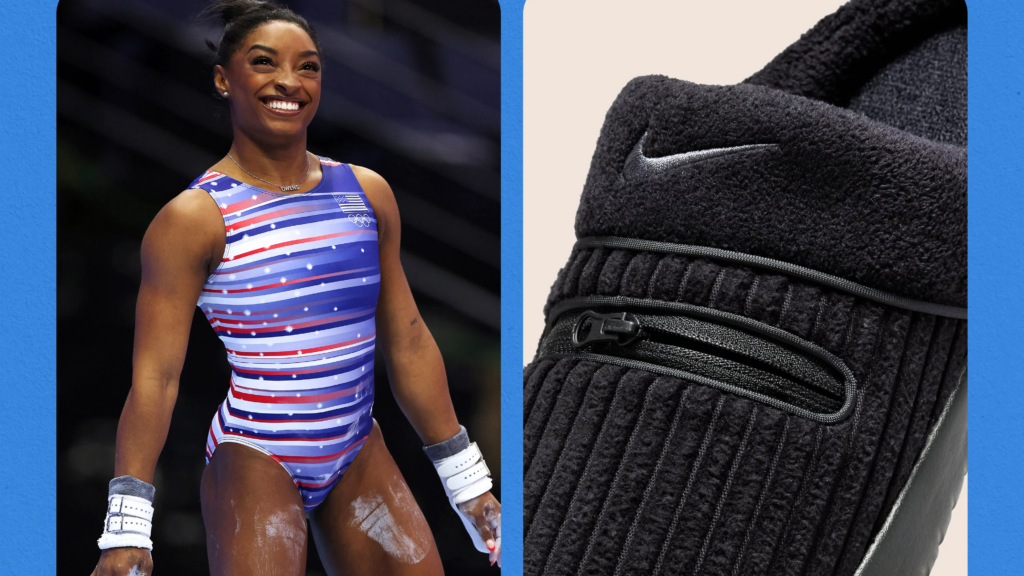Footwear influences athletic performance, particularly in the Olympics, where the slightest advantage can make or break a career. Certain shoes have become legendary, both for their engineering advances and for the athletes who wore them.
From handmade spikes to today’s super shoes, Olympic footwear has shaped sports history, sneaker culture, and athletic gear.
Jesse Owens – Adidas (1936 Berlin Olympics)
Jesse Owens carved his name at the 1936 Berlin Olympics. He grabbed gold in the 100m, 200m, long jump, and 4x100m relay, challenging the myth of Aryan supremacy in front of Adolf Hitler. His handcrafted Adidas spikes, designed by Adi Dassler himself, provided the traction and support needed for his record-breaking performances.
This moment marked the beginning of the Adidas brand’s global influence in athletics, proving that footwear innovation could enhance an athlete’s performance on the world stage.

Michael Jordan – Air Jordan 7 (1992 Barcelona Olympics)
Jordan was on the Dream Team, and his 1992 Olympics appearance changed basketball forever. It became one of the most iconic basketball shoes ever made in red, white, and blue with Olympic-inspired details.
With these sneakers, Jordan made the Air Jordan brand internationally famous. The Air Jordan 7 became a hugely popular shoe off the court, as well as in fashion and sports marketing.
Usain Bolt – Puma EvoSpeed (2008, 2012, 2016 Olympics)
Usain Bolt dominates Olympic sprinting, and his custom gold Puma EvoSpeed spikes set a benchmark for speed and excellence. These lightweight spikes featured advanced technology so Bolt could keep maximum acceleration with minimal resistance.
Puma used Bolt’s charisma and record-setting achievements beyond performance to become a top brand in track and field. The marketing success of Bolt’s signature shoes reinforced the association of elite athletes with major sneaker brands worldwide.
Cathy Freeman – Nike Swift Suit and Custom Spikes (2000 Sydney Olympics)
Gold medal winner Cathy Freeman’s victory in the 400m at the 2000 Sydney Olympics was a turning point in Australian sports history. Wearing a futuristic Nike Swift Suit and custom spikes, Freeman embodied speed, symbolism, and Indigenous representation.
Nike’s sprinting gear, which uses aerodynamic drag-reduction technology, helped her win. It was more than a race; it was a cultural victory that showed how sport unites and inspires.
Carl Lewis – Converse Star Tech (1984 Los Angeles Olympics)
Four golds in the 100m, 200m, long jump, and 4x100m relay gave Carl Lewis a name in the 1984 Olympics. He could sprint and jump in Converse Star Tech shoes.
Converse was then best known for basketball shoes, but Lewis made the brand famous in track and field. Although running shoe technology has advanced over time, Lewis’ legacy speaks to the power of well-constructed athletic footwear.
Kobe Bryant – Nike Zoom Kobe IV (2008 Beijing Olympics)
Kobe Bryant led the USA’s “Redeem Team” to gold at the 2008 Beijing Olympics and restored American dominance of international basketball. His Nike Zoom Kobe IV shoes had a low-top design that defied basketball shoe norms.
The light, responsive cushioning allowed for greater agility and speed, influencing future generations of basketball sneakers. His shoes set the standard for modern basketball shoes, combining performance with style.

Nadia Comaneci – Puma Gymnastics Shoes (1976 Montreal Olympics)
Nadia Comaneci solidified her name at the 1976 Montreal Olympics as the first gymnast to achieve a perfect 10. Her Puma gymnastics shoes, designed for superior grip and flexibility, played a crucial role in her flawless performances.
Lightweight footwear is essential in gymnastics, providing the necessary support without compromising movement. Comaneci’s success elevated Puma’s reputation in the world of gymnastics, proving that specialized athletic footwear was as important in artistic sports as in track and field.
Eliud Kipchoge – Nike Vaporfly (2021 Tokyo Olympics)
Eliud Kipchoge’s marathon victory at the 2021 Tokyo Olympics solidified him as one of the best distance runners of all time. His Nike Vaporfly shoes, featuring carbon fiber plate technology and ultra-light foam, provided an unprecedented energy return that helped him maintain his record-breaking pace.
The Vaporfly series has sparked debates over technological fairness in sports. Some critics argue that advancements in footwear may create an uneven playing field.
Regardless of the controversy, Kipchoge’s achievements demonstrated how innovation can redefine endurance sports.
Mark Spitz – Adidas Swim Shoes (1972 Munich Olympics)
Mark Spitz dominated the 1972 Munich Olympics, winning seven gold medals in swimming. While most swimmers relied solely on swimwear advancements, Spitz’s Adidas swim shoes provided an extra edge by enhancing grip on the starting blocks and reducing slip during turns.
His record-breaking performance highlighted the importance of footwear, even in aquatic sports.
Over time, the evolution of swimwear and gear has continued to push the boundaries of human performance, proving that every element of an athlete’s attire can contribute to success.
Simone Biles – Nike Custom Gymnastics Shoes (2016 Rio Olympics)
Simone Biles redefined gymnastics at the 2016 Rio Olympics, showcasing unparalleled power and precision. Her custom Nike gymnastics shoes provide both stability and flexibility, ensuring maximum performance during her routines.
Proper footwear in gymnastics is essential to prevent injuries and enhance movement, and Biles’ influence helped push for more specialized designs in the sport. Her impact on modern athletic gear extends beyond gymnastics as brands continue to innovate based on the demands of elite athletes.

Frequently Asked Questions
Why are Olympic shoes so important?
Olympic shoes enhance speed, grip, and stability, providing athletes with the best possible performance. Advanced footwear technology can contribute to marginal gains that make a significant difference in elite competition.
What makes a shoe iconic in Olympic history?
Shoes became iconic when legendary athletes wore them in historic moments. Their performance, design, and cultural impact cemented their place in sports history.
Are modern Olympic shoes too technologically advanced?
Some critics argue that innovations like carbon fiber plates and energy-returning foam give athletes an unfair advantage, leading to ongoing discussions about technological limits in sports.





